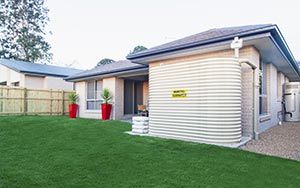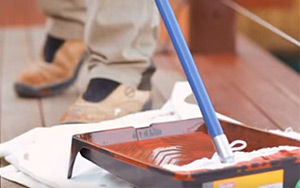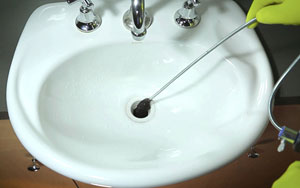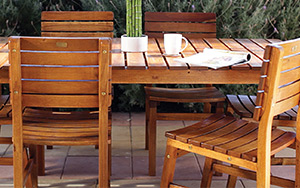Grafting Plants
Begin by placing the understock plant and the new top close together. Use a scalpel to cut a 2.5cm long strip of bark from both plants then tie the stems firmly together with budding tape. Remember to remove suckers below the graft before they take over the ornamental part of the tree.
Caring for Roses
Recently planted roses must be kept well watered for the first few months and probably through the first two summers. Roses need good, regular, deep watering, not occasional light sprinkling. Water is preferable in the morning to reduce the risk of fungal disease and flower damage.
Pruning Fruit Trees
Prune fruit trees so that their branches form a cup shape. This ensures that the centre is open and airy, and that sunlight can easily penetrate all parts of the tree.
Installing Garden Lights
Install the transformer at a minimum height of 30cm above ground level and away from the proximity of sprinkler heads. Lay out low voltage cable into position, plug in the transformer and switch “on”. Connect lights and push into ground at their chosen location.
Planting Bulbs
Dig up bulb and remove any bulbets growing on its side. Replant mixing a trowel of fertiliser into the soil at the bottom of the hole. Plant the bulbets twice as deep. Apply mulch and fertilise again in Spring when new growth appears.
Planting Seedlings Grown from Seeds
When your seedlings have their first leaves gradually expose them to a little more sun each day. After a week or so transplant them into the garden early in the morning when it’s cooler. Remember to water seedlings before removing from punnet by their leaves. Plant firmly into soil and water with half strength liquid fertiliser.
Installing a Sprinkler System
Lay out the components where you intend to install them. Begin at the tap and cut the polytube to the required lengths and connect with joiners, elbows or tees. Install pop-up sprinklers temporarily above ground, and turn on the water to test performance and check for any leakages.
Weed Control
Most summer weeds can be effectively controlled with one of the herbicides that work only through green tissues, not through the branches, trunk or soil. Purchase a weeding wand for easy application and apply to the mature leaves as well as the new growth.
Compost Techniques
Avoid sticks or branches, bulbous weeds such as onion weed, oxalis and nut grass, and any diseased plant parts. Include kitchen veggie scraps, leaves, fruit peelings, tea leaves, coffee grounds, animal manures and human hair.
Indoor Plant Care
To refresh a favourite plant simply re-pot into a larger container using a good quality potting mix. But remember, most indoor plants die from over fertilising and lack of sunlight. Use a nine-month slow release fertiliser and make sure plants receive lots of indirect natural light.
Watering
Water your garden early in the morning for best results. That’s because evening watering encourages fungal disease and watering during the day is less effective due to increased evaporation. And remember, too much fertiliser makes lawns thirsty and healthy ones use less water than sick ones.
Preparing Soil for Planting
Remove the grass and dig a large hole, turning the soil over. Remember to dig through plenty of organic matter until the soil is slightly higher than the surrounding ground to help improve drainage.
Garden Pests and Diseases
Most scale insects can be sprayed with Malascale, a mixture of Malathion and White Oil, which is not overly toxic. Sudden die back of plants is usually caused by root rot. Remove and destroy the plant. Then, improve drainage before planting a rot resistant variety.




